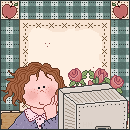Hispanic Heritage Month is September 15 - October 15, and the resources available for you to integrate its celebration into your curriculum are MANY!
The official web portal for the month-long observance is a collaborative project of the Library of Congress and the National Endowment for the Humanities, National Gallery of Art, National Park Service, Smithsonian Institution, United States Holocaust Memorial Museum and U.S. National Archives and Records Administration. The site is chock-full of links to Exhibits and Collections in these categories:
Art and Architecture The Era of Exploration Culture and Ethnography
Economics Government, Politics, and Law Poetry and Literature
History Music
Are you a science teacher? Here's a great site for you: Latinos in Math & Science: Resources for kids, young adults and teachers. Check out the hotlinks for biographies of Hispanic scientists, etc.
Do you teach math? Go to the Smithsonian's Hispanic Heritage Cultural Tour and choose Resources. Select NMAH’s “Sports: Breaking Records, Breaking Barriers” website article on Roberto Clemente as a "hook" for a lesson on mean, median, mode, and range. Or graph his hits over a span of years. Or...
The Smithsonian's HHCT is amazing in so many other ways. Click over and check out all of the Objects, the Timeline, and the Quizzes and Activities there.
Enjoy all the possibilities of the next month. November is American Indian Heritage Month, so I'll be searching out good resources for your observance of the First People's heritage!


















.jpg)









































